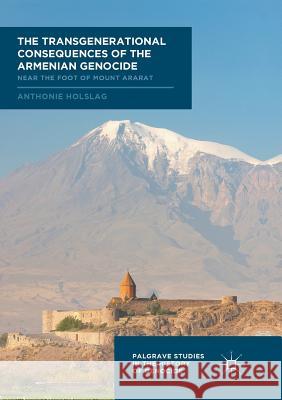The Transgenerational Consequences of the Armenian Genocide: Near the Foot of Mount Ararat » książka
topmenu
The Transgenerational Consequences of the Armenian Genocide: Near the Foot of Mount Ararat
ISBN-13: 9783030098780 / Angielski / Miękka / 2019 / 291 str.
Kategorie BISAC:
Wydawca:
Palgrave MacMillan
Seria wydawnicza:
Język:
Angielski
ISBN-13:
9783030098780
Rok wydania:
2019
Wydanie:
Softcover Repri
Ilość stron:
291
Waga:
0.37 kg
Wymiary:
21.01 x 14.81 x 1.68
Oprawa:
Miękka
Wolumenów:
01
Dodatkowe informacje:
Wydanie ilustrowane











